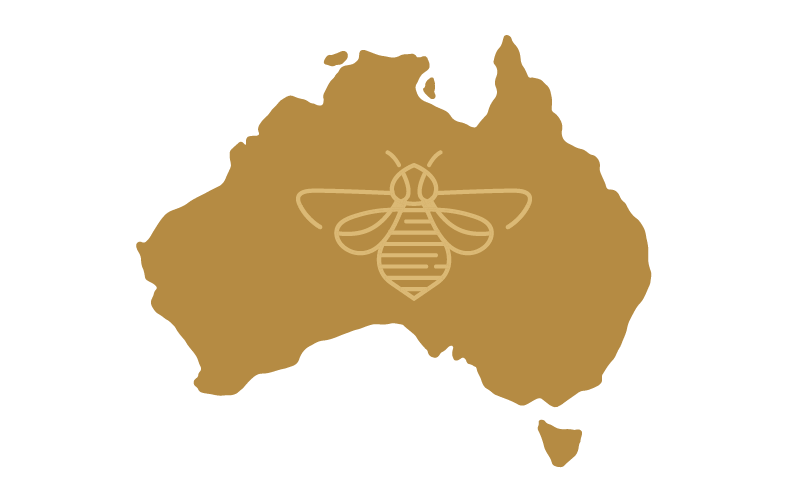Honest to Goodness Manuka Honey is made in Australia, and each batch is independently tested to assure you of its quality. Look for the product you purchased, and then your item’s batch number to review the certificate for your Manuka Honey. On your batch certificate, you will see measurements for MGO, DHA and HMF. To learn more about these terms and what they mean for your honey, read on below!

Verify Your Batch
SKU: SPHON83M5.250 & SPHON83M5.500
MGO: 83+
Certificate: Report Analysis
SKU: SPHON220M5.250 & SPHON220M5.500
MGO: 220+
Certificate: Report Analysis
SKU: SPHON550M5.250 & SPHON550M5.500
MGO: 550+
Certificate: Report Analysis

What Are MGO & DHA?
Methylglyoxal (MGO) in Manuka Honey originates from the naturally occurring chemical compound dihydroxyacetone (DHA). DHA is present in the nectar of Manuka flowers to varying degrees, meaning some Manuka plants naturally have more or less in their nectar than others.
Honey made from Manuka flowers contain high levels of DHA with no detectable MGO. As the honey is stored, the DHA content converts into MGO, resulting in increasing levels of MGO.
How Does DHA Become MGO?
Your batch certificate will measure the MGO and DHA levels in your honey. However, it’s important to understand that this continues to change as more DHA converts to MGO. This continuation isn’t steady; the process slows until your MGO reaches a “peak” level, and then the MGO will decrease as well.
The rate of conversion from DHA to MGO is temperature dependent, with higher temperatures accelerating conversion. This has led to some Manuka Honey producers falsely speeding up the process to make it more commercially valuable in the short term. However, this means the honey will reach its MGO peak earlier.
How Do You Know If Your Honey Is Heated To Increase The Conversion Rate?
Hydroxymethylfurfural (HMF) is a naturally occurring compound in honey that rises over time and is produced from the breakdown of sugar. HMF is regarded as an indicator of heat treatment and ageing. This can be a problem in Australia due to our climate. Another problem associated with HMF in Australia is some species of our plants produce nectar with naturally higher levels of HMF. This can lead to inaccurate assumptions of age or heating of honey. Although no research has shown proof of a negative impact of elevated levels of HMF, many countries (not Australia) require honey they import to have HMF readings below 80 or sometimes lower.
It’s important to note as well that due to the effect of temperature on honey, you should be mindful of where you store your honey to not impact the DHA to MGO conversion.
What Does NPA Mean?
The NPA included in the report is the Non-Peroxide Activity (NPA) test. NPA is unique to Manuka Honey, and the MGO concentration is correlated to the NPA test result for a honey. Often, this NPA is a calculated grade based on the MGO concentration.

![Introducing Sunraysia [Supplier Spotlight] Introducing Sunraysia [Supplier Spotlight]](https://cdn11.bigcommerce.com/s-dis4vxtxtc/images/stencil/160w/uploaded_images/sunrayasia-thumb1.jpg)
![Introducing Little Harvesters [Supplier Spotlight] Introducing Little Harvesters [Supplier Spotlight]](https://cdn11.bigcommerce.com/s-dis4vxtxtc/images/stencil/160w/uploaded_images/lh-blog-thumbnail.jpg)
![Introducing The LittleOak [Supplier Spotlight] Introducing The LittleOak [Supplier Spotlight]](https://cdn11.bigcommerce.com/s-dis4vxtxtc/images/stencil/160w/uploaded_images/little-oak-blog-thumbnail.jpg)
![Introducing Chief [Supplier Spotlight] Introducing Chief [Supplier Spotlight]](https://cdn11.bigcommerce.com/s-dis4vxtxtc/images/stencil/160w/uploaded_images/chief-thumb.jpg)
![Introducing SunButter [Supplier Spotlight] Introducing SunButter [Supplier Spotlight]](https://cdn11.bigcommerce.com/s-dis4vxtxtc/images/stencil/160w/uploaded_images/sunbutter-blog-thumbnail.jpg)